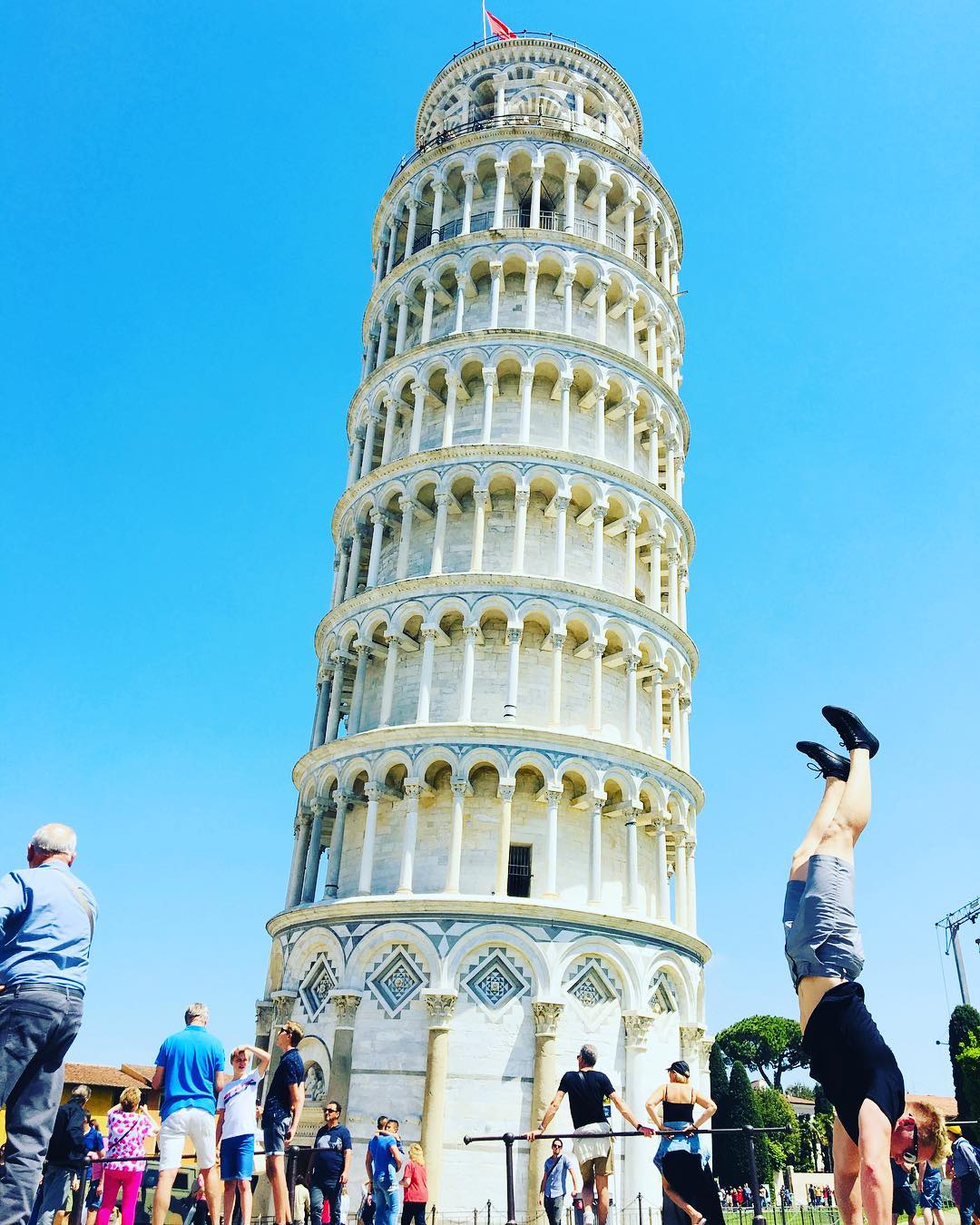What is a leaning handshake at the Leaning Tower of Pisa with Michelle Samuels?
Share
Six-Word Story #12: Having fun and smiling while leaning!
Making it to Pisa, Italy and seeing the Leaning Tower of Pisa
When I first found out that I was assigned to the Seabourn Quest in early 2018, I immediately looked at the schedule of where this cruise ship was heading and imagined all the places I would be able to see. However, my focus was mainly on seeing that it was going to be in South America and Antarctica for me to have the opportunity to travel to this part of the world. I knew I would be traveling to Europe later on while on the Seabourn Quest but gave little thought to where and what I would see while visiting the European continent. And thus, the surprise of making it to the Leaning Tower of Pisa was made in about a 40 min van ride from where the Seabourn Quest was docked in Livorno, Italy. I ended up traveling with seven other crew members, hustling from the ship into the town, and finding a driver to make it to the tower and back. So grateful I had the opportunity to make it as I don't believe I would have made it to this site with a fascinating architectural history and seeing the iconic lean in the tower.
The handshake and who is Michelle?
Michelle Samuels is a coworker from the spa department and is a masseuse and facialist. She is originally from South Africa, and we have shared many laughs from chatting about ship life and hearing her share her culture and phrases spoken in South Africa. I first met Michelle when I had the opportunity for her to be one of the first crew members she met while she boarded the Seabourn Quest in Chile with all her pink luggage. I believe anytime we see each other throughout life, we will always have this silly memory of me carrying her pink luggage and first meeting this way and laughing. Michelle, thank you for the creative handshake.
During the handshake, I loved the randomness of how we introduced Italian hand gestures and incorporated a lean in our handshake and how we timed it perfectly to when random people were by us that the handshake ended at the ideal time for us to lean to the left and miss the couple that was walking past us.
History of the Leaning Tower of Pisa
The story of the Leaning Tower of Pisa goes back to the 12th century. The ground where the Leaning Tower of Pisa is built is on a marsh meaning that the environment is very soft, and depending on the weight of the building, it would be very challenging for the group to support the structure. And this is the cause for why the Leaning Tower of Pisa leans. When the project began and was in progress, the tower's foundation started to shift, sink into the ground, and then lean to one particular side. The builders did their best to compensate for the flaw in the building by adding additional weight to the building on the opposite side. This only led to the building eventually sinking further into the ground. Many experts in engineering have stated that it was nothing short of a miracle. The project was completed in 1360, and up until 1990, it attracted over million people visiting the tower before it was closed for 11 years to work on repairs and for engineers to provide more excellent structural support to prevent the building from collapsing. And also, maintaining the iconic lean, if you would like to learn more, check out this article on the history of the Leaning Tower of Pisa from history.com.
You can connect with Michelle on her
Facebook page or
Instagram page.


Ready to work with Xander Clemens?
I'd be happy to discuss your project and how we can work together to create unique, fun and engaging content.
Go ahead and click here to be taken to my business service page and see what I can do for you. Book a call with me now. Looking forward to chatting soon!




